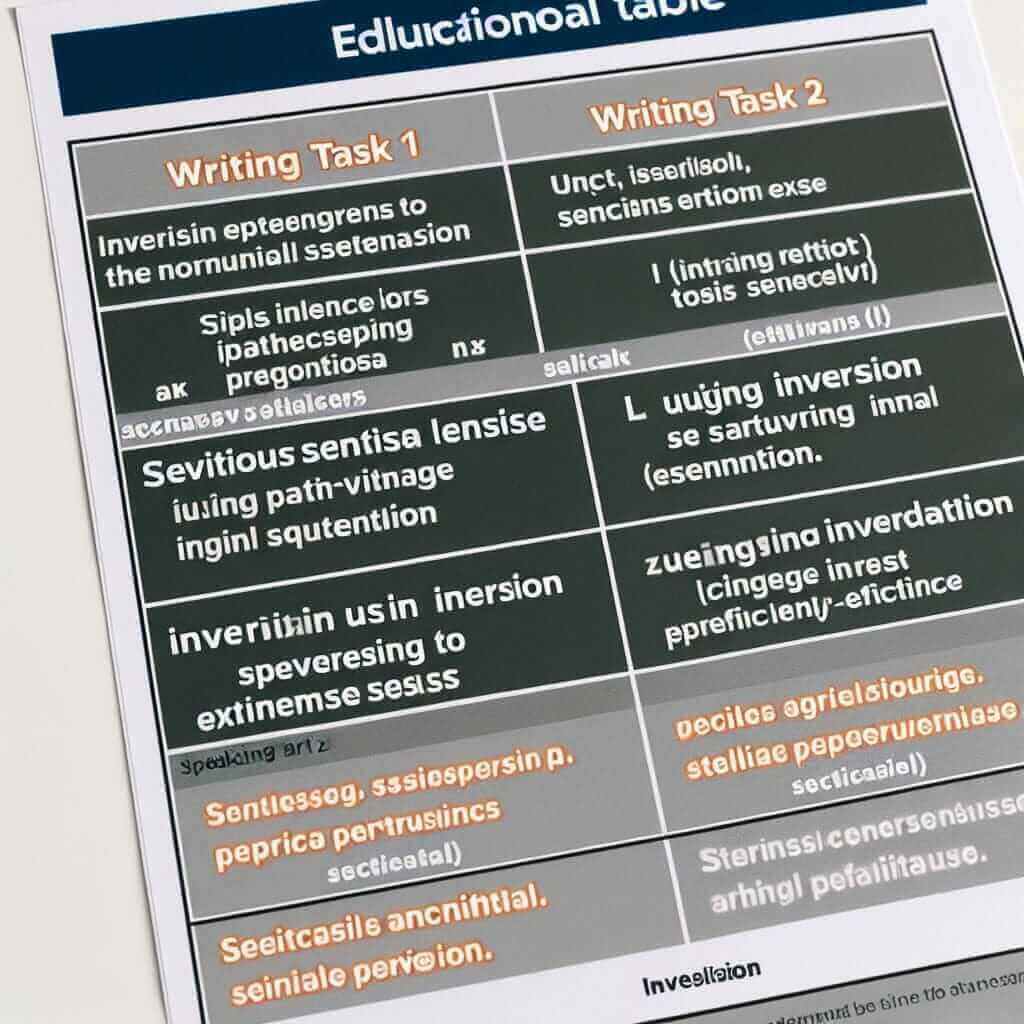In the realm of high-scoring IELTS grammar, there’s a technique that can make your writing stand out: inversion. But before you shy away from this “complex grammar” label, understand that it’s simpler than it sounds. Today, we’ll be dissecting a phrase that uses this technique, “Not once did she look back,” and explore how you can use inversions like a native speaker to boost your IELTS score.
Let’s kick things off with a few examples of how inversion can be woven into various sections of the IELTS exam:
- Writing Task 2: “Never before had the world faced such a complex environmental crisis. This is a challenge that demands immediate action from all nations.” (This uses inversion to emphasize the unprecedented nature of the crisis.)
- Speaking Part 3: “Well, rarely do I see people reading physical books these days. Everyone seems glued to their phones.” (This makes the speaking more engaging and less monotonous).
- Listening: You might encounter inversion in listening passages, often in formal speeches or academic contexts.
As you can see, mastering inversion can give you a significant edge across all areas of the IELTS exam.
Deconstructing Inversion and Its Significance
Inversion, simply put, is reversing the typical subject-verb order in a sentence. Normally, we’d say, “She didn’t look back once.” However, by using “Not once did she look back,” we create a more dramatic and emphatic tone.
When Does Inversion Appear in IELTS?
While inversion might sound advanced, it’s about understanding where to use it effectively. In IELTS, you’ll find it often appears in:
- Formal writing and speaking
- Literature and literary criticism
- Emphasizing a point
The Formula and Applications of Inversion
Let’s break down the formula for using inversion, particularly with negative adverbials, which is the type used in “Not once did she look back.”
Formula:
Negative Adverbial + Auxiliary Verb + Subject + Main Verb
Examples & Analysis:
- “Hardly had I sat down when the phone rang.”
- Negative Adverbial: Hardly
- Auxiliary Verb: had
- Subject: I
- Main Verb: sat down
- “No sooner had she finished speaking than the audience erupted in applause.”
- Negative Adverbial: No sooner
- Auxiliary Verb: had
- Subject: she
- Main Verb: finished
Application in IELTS:
- Writing: Inversion is excellent for crafting complex sentences in Task 1 (describing trends) and Task 2 (presenting arguments). For example, “Under no circumstances should we ignore the plight of endangered species.” This demonstrates strong grammatical range.
- Speaking: Using inversion, particularly in Part 2 and Part 3, can showcase your fluency and ability to use a range of grammatical structures naturally.

Putting Inversion into Practice
Here are some more examples of how you can use inversion in different parts of the IELTS exam:
Writing Task 1:
- Instead of: “The price of oil increased sharply in 2010. This was followed by a slight decrease.”
- Use Inversion: “No sooner had the price of oil increased sharply in 2010 than it experienced a slight decrease.“
Speaking Part 2:
- Instead of: “I have never been more terrified in my life.”
- Use Inversion: “Never in my life had I been more terrified.“
Reaching for a Higher Band: Variations and Style
To truly impress the IELTS examiner, consider these variations:
- “Only when…” + inversion: “Only when I started university did I realize the importance of time management.”
- “So + adjective… that…” + inversion: “So captivating was her story that the entire room fell silent.”
Common Inversion Errors and How to Avoid Them
Even with the best intentions, inversion can trip up IELTS candidates. Here’s how to steer clear of the most common pitfalls:
- Incorrect Verb Form: Ensure the auxiliary verb agrees with the tense of the main verb.
- Incorrect: Never I had seen such beauty.
- Correct: Never had I seen such beauty.
- Overusing Inversion: Like a pinch of salt, a little goes a long way. Overusing inversion can make your writing sound unnatural.
Conclusion: Making Inversion Your Secret Weapon
Inversion is a powerful tool in your IELTS arsenal. It allows you to:
- Emphasize key points.
- Demonstrate grammatical range and accuracy.
- Add sophistication and fluency to your language.
Remember to practice using inversion in various contexts, and soon it’ll become second nature! Good luck, and happy writing!